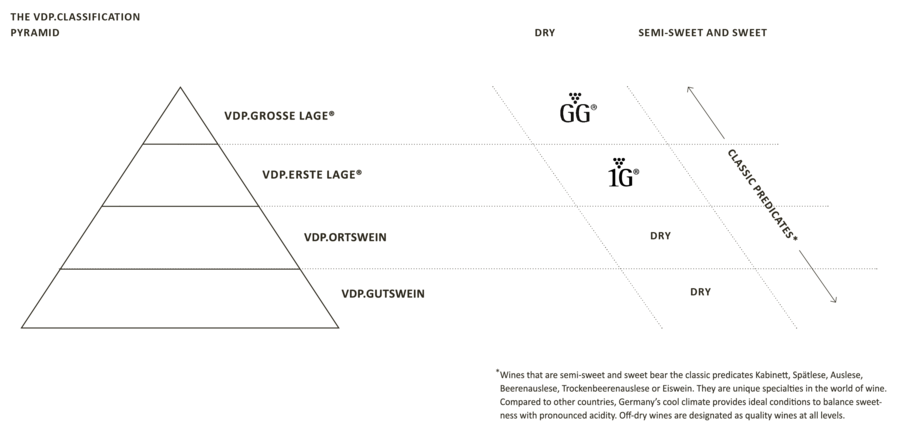ORIGIN IS EVERYTHING.
On the best vineyards of Germany, first-class sites, soil ambassadors and liquid calling cards for our vintners.
The key to the uniqueness of VDP.Wines is their origin. The soil, light and shade, wind, heat and coolness all contribute to making the wines exceptional and give them personality and character. The winegrowers in the VDP analyze these conditions in detail, consulting old vineyard maps, searching for appropriate grape varieties and evaluating the vineyards based on both their historical performance and current potential. Our VDP classification is based on a clear philosophy: the narrower the origin, the higher the quality
We award only the very best vineyards our VDP.GROSSE LAGE® designation. Wines from these vineyards shine through their uniqueness and distinctiveness. VDP.ERSTE LAGE® wines are also distinguished by their unparalleled ability to express the essence of a vineyard. VDP.ORTSWEINE come from a village’s best vineyards. VDP.GUTSWEINE are the foundation of our origins-based philosophy and come only from our own vineyards. All wines from our winegrowers bear the VDP.Eagle on the bottleneck – as a trustworthy guarantee for the quality within.
By the way: The VDP.Classification is not stipulated in German wine law, but reflects the VDP’s own private regulations.
Click here for the digital VDP.classification flyer
The VDP first started considering its own internal classification in response to unfortunate side effects from the Wine Act of 1971. While well intentioned, they actually made it more difficult to distinguish good wines from bad ones. The decisive weaknesses of this law were:
1. Devaluation of site names
In 1971, all vineyards in Germany were redefined to be “quality areas.” Thousands of vineyards were lumped together into vineyard blocks, which were then named for the best-known vineyard within, even where they crossed into several localities and where the quality of the sites varied greatly. Because the large blocks now often bore the name of small but famous historical vineyards sites, producers could intentionally mislead consumers about the actual origins of the grapes inside.
2. The traditional quality designations were no longer indicative
The quantities of wine that could be marketed under predicate designations were inflated because the sugar content in the grape juice alone determined the quality classification.
3. The quality terms were not linked to taste typicities
Traditionally, residual sweet wines were only possible by allowing nature to run its course. Advances in winemaking technology, however, now allowed for such wines to be produced using technical means (e.g. through sweet reserve). As a result, however, few winegrowers continued producing high-quality dry wines and traditional terms such as "Spätlese" were repurposed for a variety of flavor profiles. By 1984, the VDP.Member estates began work on an internal classification movement to counteract the aforementioned undesirable developments. Since 2001, the VDP has gradually updated its internal classification model to fit the needs of consumers, the market and the wine-loving public. Of course, no optimal solution could be found to reverse three decades of misguided developments in one single step.
But after many years of discussion and exchange, the new classification was unanimously adopted at an extraordinary general meeting in Neustadt an der Weinstraße in January 2012.
Since 1996 | The VDP.Prädikatsweingüter have gradually updated their internal classification model to fit the needs of consumers, the market and the wine-loving public. Of course, no optimal solution could be found to reverse three decades of misguided developments in one single step. In addition, the legal framework conditions, such as wine designation law, also had to be observed.
From 1996 | A VDP manifesto is published: "A classification of the vineyards, the advantages of which other wine-growing countries have long recognized, will secure our common cultural heritage for the future."
1996 | The VDP.Nahe ratifies the Riesling Statute. Only Riesling wines from the best demarcated vineyards may be labeled with vineyard names.
1997 | Der VDP.Nahe beschließt das Riesling-Statut. Nur noch Riesling-Weine aus den besten, abgegrenzten Weinbergen werden mit Lagenbezeichnung angeboten.
1998 | Foundation of the Comité ERSTES GEWÄCHS. Estates from the Rheingau, Rheinhessen and Pfalz regions join forces to promote the ERSTES GEWÄCHS concept.
1998 | The VDP general meeting adopts uniform classification principles for classified wines of German origin: The wines should have a clear, high-class profile based on origin, grape variety and taste.
1999 | The quality map for the Rheingau sites is presented and Hessen’s "ERSTES GEWÄCHS" quality classification regulation is passed. Starting with the 1999 vintage, the region’s wines may use the term "ERSTES GEWÄCHS" on the label.
2000 | Name change of the association to VDP.Die Prädikatsweingüter.
2001 | Casteller Decisions: The VDP General Assembly adopts the first internal classification of origins and agrees on a three-stage model. The focus was placed on the top level of the classification, to be called "Grosses Gewächs."
2002 | The VDP General Assembly specifies the definition of the Grosses Gewächs as a dry wine in terms of taste, while also reserving space for fruity and noble sweet wines at the same qualitative level as the Grosses Gewächs wines. A stylized “Numeric One plus Grapes” icon serves to distinguish these wines.
2003 | With the adoption of the classification statute by the Mosel-Saar-Ruwer association, clear taste definitions are established for the fruit-sweet predicates of the highest classification level, henceforth to be known as ERSTE LAGE. (Background: at that point, the term “Großelage” (vineyard block) from Wine Law was still playing a major role in wine marketing for bottled wines, and there was concern that the resemblance between that term and GROSSE LAGE would lead to confusion among consumers).
2006 | Marienthaler resolutions: The VDP general meeting paves the way for today's currently applicable classification:
• „VDP.ERSTE LAGE®“ is the uniform generic term in all growing regions for all wines of the highest category: The "Eins mit Traube" (Numeric One plus Grapes) identifies these wines on the label and, in the case of dry wines, on the bottle.
• Dry wines from the Erste Lage sites are called GROSSES GEWÄCHS. Starting with the 2006 vintage, these wines were dry in accordance with the legal standard, meaning a maximum of nine grams of residual sugar.
• The fruit-sweet VDP.ERSTE LAGE® wines are marked with the predicates in the traditional sense, e.g. Spätlese, Auslese up to Trockenbeerenauslese and Eiswein.
• Use of sites: after a transitional period, only one dry VDP.GROSSES GEWÄCHS® wine per year may bear the vineyard name.
2012 | In an extraordinary general meeting in Neustadt an der Weinstraße, the four-stage VDP.Classification with VDP.GUTSWEIN, VDP.ORTSWEIN,
VDP.ERSTE LAGE® and VDP.GROSSE LAGE® is unanimously adopted - analogous to the Burgundian classification with Premier Crus and Grands Crus. Starting with the 2012 vintage, this will make it possible to differentiate between the quality of the sites. As a result, all sites that to that point had been classified as ERSTE LAGE were reviewed for their suitability, in parts or as a whole, for reclassification as a VDP.GROSSE LAGE® site. From now on, only wines with vineyard character should bear a vineyard name.
VDP.GROSSE LAGE®
Only the very finest! VDP wines from these sites are Germany's absolute best
VDP.GROSSE LAGE® is the designation for the highest quality German vineyards. This is where Germany’s finest wines grow – wines notable for their individual character and ability to express the essence of their vineyard of origin. They are also known for their long potential cellarability. VDP.GROSSE LAGE® wines are planted with grape varieties typical for the region and matching the needs of that respective vineyard. The vineyards are precisely demarcated by parcel. We call dry wines from these vineyards VDP.GROSSES GEWÄCHS®.
VARIETIES
Regionally defined grape varieties suitable for the respective vineyard. You can find out more about the regionally authorized grape varieties at the end of this page (1).
YIELD
The harvest is limited to a maximum yield of 50 hectoliters* per hectare.
HARVEST AND TIME OF HARVEST
The grapes are harvested selectively by hand. The grapes must be physiologically fully ripe.
VINIFICATION
The wines are produced exclusively using traditional production methods.
CERTIFICATION
In addition to the usual VDP.Audit, the wines from VDP.GROSSE LAGE® sites are subject to additional control and testing: the quality-oriented work in the vineyard and in particular the yield levels are monitored for each vineyard during the entire vegetation period and before the harvest. Before and after bottling, the wines are inspected and confirmed by a board of examiners.
LABELING
Dry wines from VDP.GROSSE LAGE® sites are called VDP.GROSSES GEWÄCHS® and bottled in a special bottle embossed with the GG grape logo.
Fruity and noble sweet wines carry the classic predicates "Kabinett", "Spätlese", "Auslese", "Beerenauslese", "Trockenbeerenauslese" and "Eiswein".
A wine from a VDP.GROSSE LAGE® bears on its label the name of the vineyard and the grape variety as well as the vineyard name without the place name as an indication of its origin. Each wine from a VDP.GROSSE LAGE® bears an appropriate marking on the capsule.
In exceptional cases, the estate may forgo the special GG bottle, with the "GG grape" logo instead placed on the front label.
MARKETING
Fruit and noble sweet Prädikat-classification wines from VDP.GROSSE LAGE® sites are released onto the market on May 1 of the calendar year following harvest. The white wines classified as VDP.GROSSES GEWÄCHS® are only released onto the market after roughly one year of maturation, on September 1. And the red wines mature one year longer – at least 12 months of that in oak barrels – and are not released for sale until September 1 of the second calendar year following harvest.
* Nature is part of our profession and the weather determines our craft. For this reason, deviations from our regulations are possible on a year-by-year basis in accordance with regional criteria. The steepness of the vineyard location and the number of vines planted can also play a role.
The regions have defined the following grape varieties for VDP.GROSSE LAGE®:
Ahr: Pinot Noir, Frühburgunder. Exclusively noble sweet: Riesling
Baden: Riesling, Pinot Blanc, Pinot Gris, Chardonnay, Pinot Noir, Lemberger (Badische Bergstrasse & Kraichgau)
Franconia: Riesling, Silvaner, Pinot Blanc, Pinot Noir
Middle Rhine: Riesling, Pinot Noir
Mosel-Saar-Ruwer: Riesling, Pinot Noir
Nahe: Riesling
Palatinate: Riesling, Pinot Blanc, Pinot Noir
Rheingau: Riesling, Pinot Noir
Rheinhessen: Riesling, Pinot Noir
Saxony / Saale-Unstrut: Riesling, Pinot Blanc, Pinot Gris, Pinot Noir, Pinot Noir, Chardonnay
Württemberg: Riesling, Pinot Blanc, Pinot Gris, Pinot Noir, Lemberger
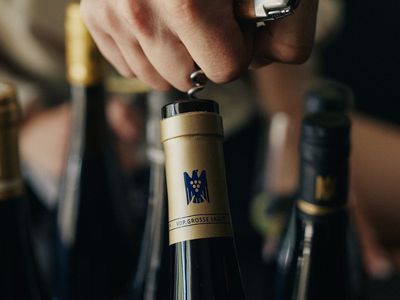
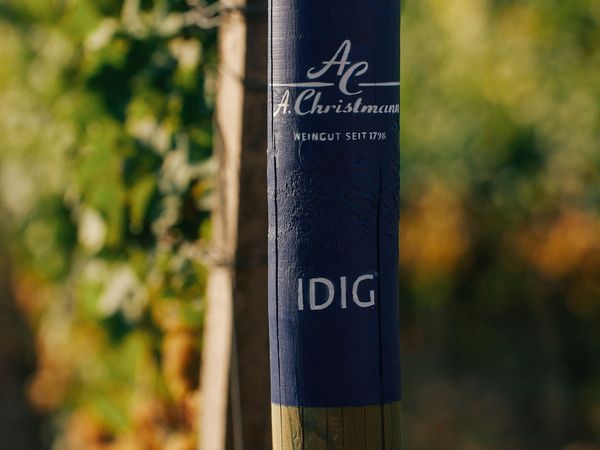
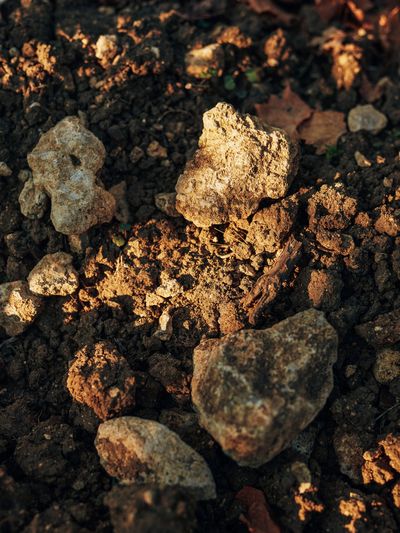
VDP.ERSTE LAGE®
Our VDP first class wines – each an individual in itself.
Our VDP.ERSTE LAGE® classification level allows us to distinguish first-class vineyards with their own character. The growing conditions for the vines must be optimal. This is expressed, for example, in the fact that wines of sustainably.
VARIETIES
Regionally defined grape varieties suitable for the respective vineyard. You can find out more about the regionally approved grape varieties below.
YIELD
The harvest is limited to a maximum yield of 60 hl* per hectare.
HARVEST AND TIME OF HARVEST
The grapes are harvested selectively by hand. The grapes must be physiologically fully ripe.
VINIFICATION
The wines are produced exclusively using traditional production methods.
CERTIFICATION
In addition to the VDP.Audit for wines from VDP.ERSTE LAGEN®, the quality-oriented work in the vineyard is monitored. There is also a tasting conducted by an examination commission to examine and release the wines in accordance with regional defaults.
LABELING
A dry VDP.ERSTE LAGE® wine is labelled as "Qualitätswein trocken” (dry quality wine). The dry wines from VDP.ERSTER LAGE® will in future be marked with this logo. No predicate levels are awarded for dry wines.
Quality wines that are legally considered semi-dry do not carry any additional designation and in fact labeling as semi-dry is optional. The same applies to off-dry (feinherb) wines.
Fruity and noble sweet wines carry the classic predicates "Kabinett", "Spätlese", "Auslese", "Beerenauslese", "Trockenbeerenauslese" and "Eiswein".
A wine from VDP.ERSTER LAGE® carries a combination of place and vineyard names (e.g. Gimmeldinger Biengarten) on the label in addition to the name of the winery and the grape variety as an indication of its origin. Each wine from VDP.ERSTER LAGE® carries a corresponding marking of the classification on the capsule.
MARKETING
In order to give the VDP.ERSTE LAGE® wines an appropriate minimum maturity, they are first put on the market at the VDP Weinbörse, which takes place every year at the end of April in Mainz.
* Nature is part of our profession and the weather determines our craft. For this reason, deviations from our regulations are possible on a year-by-year basis in accordance with regional criteria. The steepness of the vineyard location and the number of vines planted can also play a role.
The following grape varieties have been defined by the Regions in addition to the VDP.GROSSE LAGE® grape varieties for the VDP.ERSTE LAGE®:
Baden: Riesling, Pinot Blanc, Pinot Gris, Chardonnay, Pinot Noir, Lemberger (Badische Bergstrasse & Kraichgau), Silvaner, Scheurebe, Gewürztraminer, Muscat, Sauvignon Blanc, Auxerrois, Black Riesling. Exclusively noble-sweet: Rieslaner
Franken: Riesling, Silvaner, Pinot Blanc, Pinot Noir, Pinot Gris, Scheurebe, Rieslaner, Traminer, Frühburgunder. Supplementary on request: Müller-Thurgau, Chardonnay, Sauvignon Blanc, Muscatel, Lemberger
Middle Rhine: Riesling, Pinot Noir
Nahe: Riesling
Pfalz: Riesling, Pinot Blanc, Pinot Noir, Pinot Gris, Chardonnay, Gewürztraminer. As VDP.ERSTES GEWÄCHS® Riesling, Pinot Blanc, Pinot Noir. In the noble sweet range: Scheurebe, Rieslaner and Muskateller
Rheingau: Riesling, Pinot Noir
Rheinhessen: Riesling, Pinot Noir, Silvaner, Pinot Blanc, Pinot Gris, Chardonnay
Saxony / Saale-Unstrut: Riesling, Pinot Blanc, Pinot Gris, Pinot Noir, Frühburgunder, Traminer, Chardonnay, Blauer Zweigelt (Saale-Unstrut)
Württemberg: Riesling, Pinot Blanc, Pinot Gris, Pinot Noir, Lemberger, Silvaner, Chardonnay, Gewürztraminer, Muscat, Sauvignon Blanc, Samtrot, Trollinger, Zweigelt, Merlot
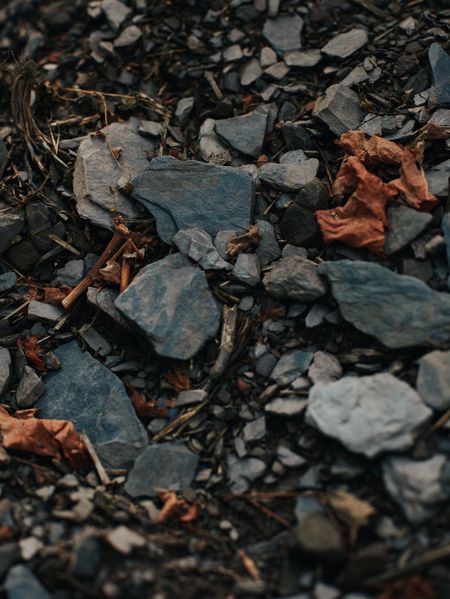
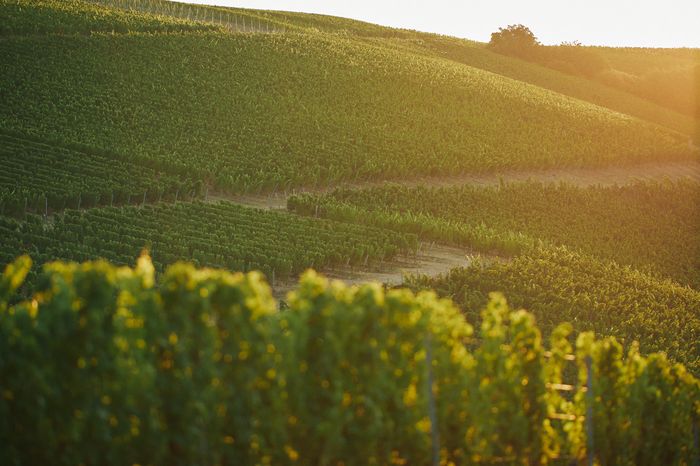
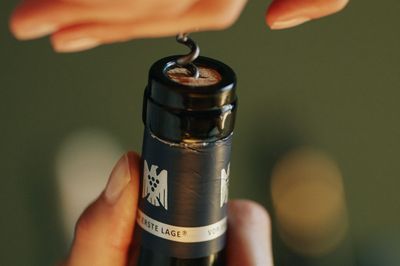
VDP.ORTSWEIN
Ambassadors of the best soils -
from a distinct place, pure and expressive.
Our VDP.ORTSWEINE are a real insider tip: because many come from VDP.GROSSE LAGE® and VDP.ERSTE LAGE® sites. In any case, they originate from high-quality, characterful and traditional vineyards within one locality and give the typical local terroir a sense of expression. Only regional grape varieties are bottled.
DELIMITATION OF ORIGIN
VDP.ORTSWEINE originate from high-quality, characterful and traditional vineyards within a local wine district. The preselection grapes from VDP.ERSTE LAGE® and VDP.GROSSE LAGE® sites or the grapes from young stands within the best vineyards are often used for the category VDP.Ortswein.
YIELD
The harvest is limited to a maximum yield of 75 hectoliters per hectare.
TASTE TYPE
The dry VDP.ORTSWEIN is labelled as "quality wine dry." For dry wines, no further predicate levels are awarded. Fruity-sweet VDP.ORTSWEINE carry the classic predicates (Kabinett, Spätlese, Auslese, Beerenauslese, Trockenbeerenauslese, Eiswein).
LABELING
On the label, the place name indicates the origin. The term VDP.ORTSWEIN can be used as a banderole on the capsule below the Grape Eagle (or as a band on the label)..
MARKETING
It is recommended not to market the wines before March 1 of the year following the harvest.
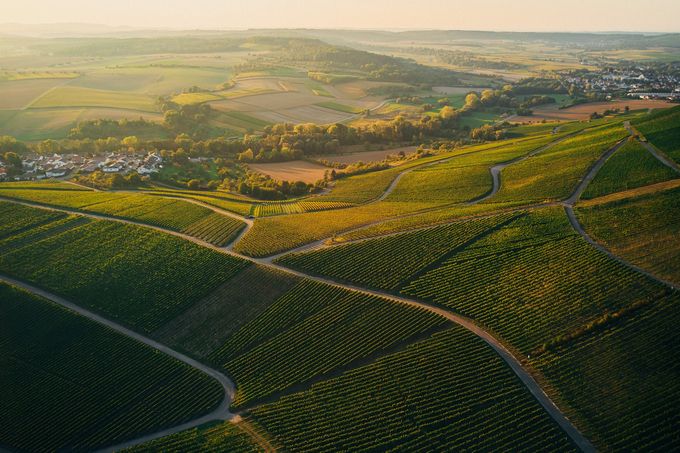
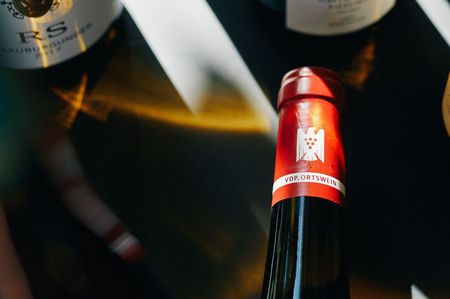
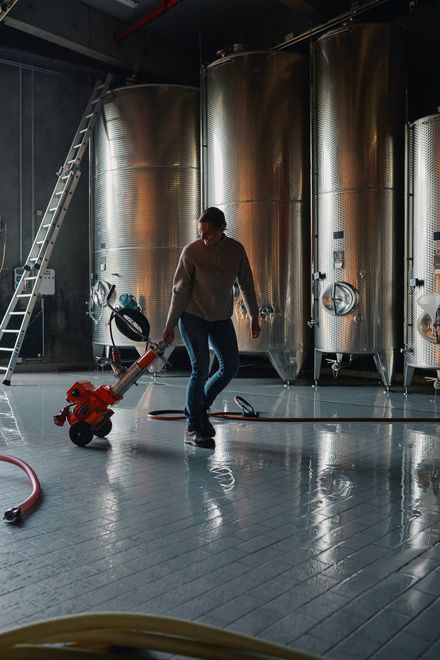
VDP.GUTSWEIN
Basis at its best. These VDP.Wines are good from the ground up.
Our wines for every day: Each VDP.GUTSWEIN embodies the philosophy and the distinctive signature of our winegrowers. They are often the first wines of a wine year to be bottled and sold – and thus trendsetters for a vintage. The wines grow in the estate's own vineyards. Since our winegrowers here have a lot of freedom in making wine – the classification regulations only significantly affect the higher quality levels – many innovative creations can be found in this range. VDP.GUTSWEINE are regarded as a kind of calling card for the winery: an ideal way to gain a first impression of the winegrower's style or to become a repeat offender ...
VARIETIES
All grape varieties are accepted. At least 80 per cent of the vine varieties grown should be typical for the region.
YIELD
The harvest is limited to a yield of 75 hectoliters per hectare.
LABELING
A VDP.GUTSWEIN bears the name of the winery, the region and the grape variety on the label. The VDP.GUTSWEIN may or may not be identified as such on the label or capsule. The dry VDP.GUTSWEIN is labelled as "quality wine dry." For dry wines, from vintage 2019 on, no further predicate levels are awarded. Fruity-sweet VDP.ORTSWEINE carry the classic predicates (Kabinett, Spätlese, Auslese, Beerenauslese, Trockenbeerenauslese, Eiswein).
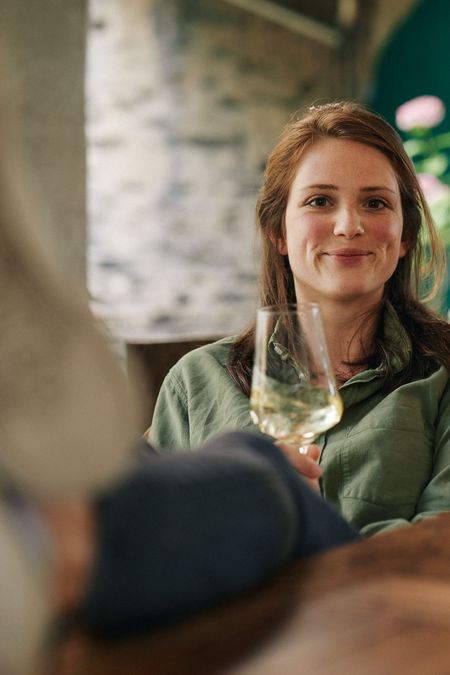
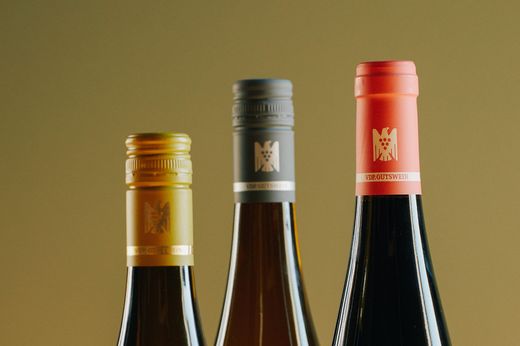
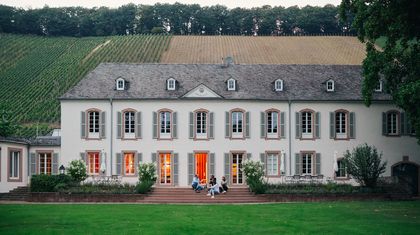
©2020
photos: Peter Bender

